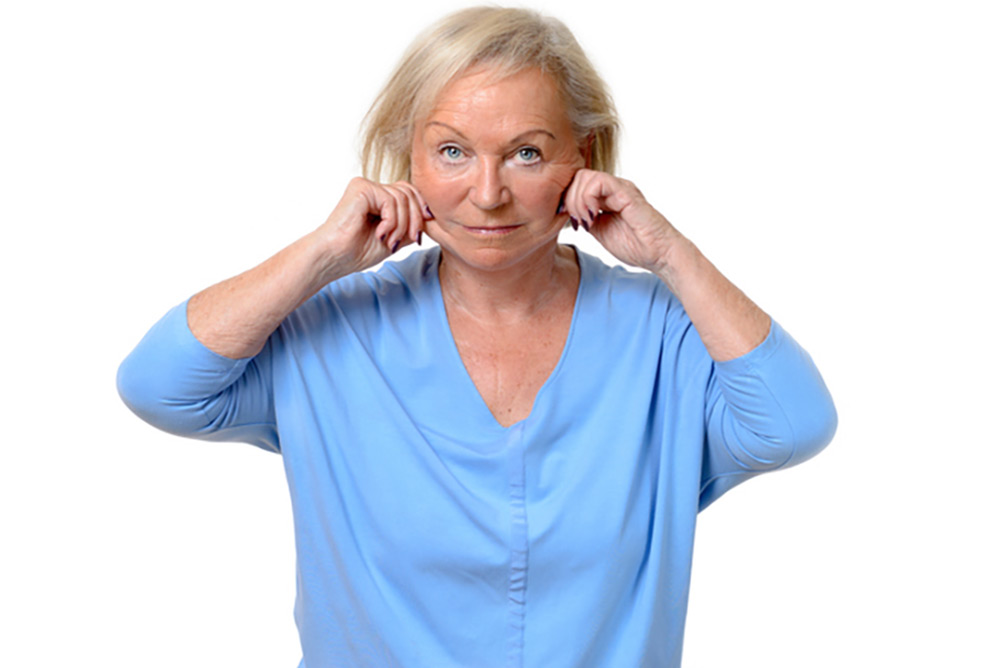By Valerie Monroe
If you’re interested in feeling happier about your appearance—especially as you age—you might like reading what she has to say about it. For more of her philosophical and practical advice, subscribe for free to How Not to F*ck Up Your Face at valeriemonroe.substack.com.
DID YOU SEE the story about Rakus, a Sumatran orangutan who healed a wound on his face with a medicinal plant? It’s the first time such behavior has been observed in a wild animal. (He both used the plant topically and ingested it.) In addition to his newfound fame, I think Rakus has a promising career as a pharmacist; HNTFUYF is clearly a cross-species concern.
◊◊◊◊◊◊◊◊◊◊
I told you that a post about jowls was in the works (pronounce it like “bowls”—much more fun). It turns out jowls are a rich subject, so I’m breaking up interviews with a dermatologist and a plastic surgeon into two posts. Today’s post includes expert advice from the terrific dermatologist Hadley King, MD.
There’s a lot I didn’t know about jowls, because who cares about jowls until you have them? But here we are.
The first thing I learned is that there are different kinds, and even—we’ll get to this next week—a jowls impostor. Dermatologist Hadley King, MD, explains the difference: “For some people, they’re just composed of skin, caused by increasing laxity over time. For others, jowls contain fat,” she said. The treatment for each kind is different, and because the wrong treatment can make the jowl look more pronounced, you want to know what you’re dealing with.
If you’re unhappily gifted with lax-skin-no-fat jowls, trying to remove fat from the area could make skin laxity more evident, said King. Well-placed filler along the cheekbone, at the angle of the jaw and at the pre-jowl sulcus (the area between the tighter skin of the chin and the softer skin of the cheek), can make the jawline look smoother and create vectors that subtly reduce the look of jowls, she said.
Vectors?
“I always emphasize to patients that we are not actually lifting much with filler; we’re adjusting proportions and the angles at which the skin lies against the structure of the face.” King also suggested that tightening devices like Sofwave, Ulthera, and Radio Frequency (RF) microneedling can reduce the appearance of jowling. As can a thread lift. I’ve written about thread lifts un-encouragingly, though King thinks the newer threads are better compared with the ones from the late ’90s/early 2000s, and she hasn’t heard about the new threads breaking. (I guess good news; my plastic surgeon friend has more to say about them next week.)
King wouldn’t recommend the treatments above for those with fatty jowls. Instead, procedures that remove fat like Kybella and deep RF microneedling are most likely to achieve the desired result. Speaking of desired results, here’s what King wrote about the energy-based devices mentioned above when I exhibited some skepticism about their efficacy: “I agree that the results achieved by energy-based devices are variable. I have trusted colleagues who swear by the results they get from devices like Ulthera and Morpheus8. I personally saw improvement in my neck after Sofwave. I’ve treated a lot of people with Ulthera, Sofwave, Endymed Intensif, and most recently Candela Matrix Pro, and I can say that patients are generally pleased.”
The part I especially want you to hear .
“Managing expectations is an important part of patient satisfaction,” said King. “I explain that results are variable, because they depend on how much or how well your skin produces collagen in response to the energy, and that results won’t be as dramatic as those produced by surgery. Patients hoping for subtle results tend to be happy when they see subtle results.”
There’s an anecdote I want to share from another beloved dermatologist: I asked what kind of results she was seeing with a new device she was using on her patients (I can’t remember the device). “I’ve had some good, subtle results,” said the doctor. “Subtle?” I asked. “Yes, one patient who was especially pleased said she no longer minded how she looked from below when she wiped off her mirrored cocktail table.” In other words, subtle might mean results are most noticeable when you’re peered at from below.
Now for microcurrent devices, which cause muscles to contract from a low-voltage current. “There’s little scientific data to support the anti-aging claims,” said King. These devices are often recommended more for “pre-juvenation” ♀️ and maintenance, because the results are likely to be modest, she said. Why might you see a change in jowls after a treatment? “Because microcurrent causes muscle contraction, the immediate effect can tone the jawline—but only temporarily.” King hasn’t seen convincing evidence of long-term effects.
From electric shock to bloody shock, there’s Ellacor. “The idea of lifting with ‘scarless micro-coring technology’ [basically super-intense microneedling] is appealing and I was excited about this before it came out,” said King. But she spoke to a surgical colleague who tried it and described it as a very “bloody” procedure. He also said it requires three treatments to get results he thought were comparable to using a CO2 laser. Maybe, like King, we’ll sit this one out for now.
Finally, having window-shopped all the alternatives offered in the dermatologist’s office, we come to facial exercises we could do at home. We could do them, but at HNTFUYF HQ, we won’t. “The muscles we use to make facial expressions cause many of the wrinkles on our face, particularly crow’s feet, the ‘elevens’ between the brows, and horizontal lines across the forehead,” said King. Repeated muscle contractions of the upper face can make forehead lines and crow’s feet deeper.
In fairness to exercise junkies, King points to a 2018 study that showed a 30-minute daily or alternate-day facial exercise program sustained over 20 weeks may modestly improve the facial appearance of select middle-aged women. But the study’s sample size was small (just 16 women completed the full program); only middle-aged women who self-selected participated; there were numerous dropouts; and there was no control group. Bottom-line: For certain motivated patients, facial exercises could be beneficial, but results require consistency and time—and they won’t work for everyone.
One last caveat. Facial exercise isn’t a good idea if you’ve had dermal filler, said King, because some thinking suggests the exercises may reduce the fillers’ longevity.
Can you believe it? There’s more to say about jowls. That’s next week.



